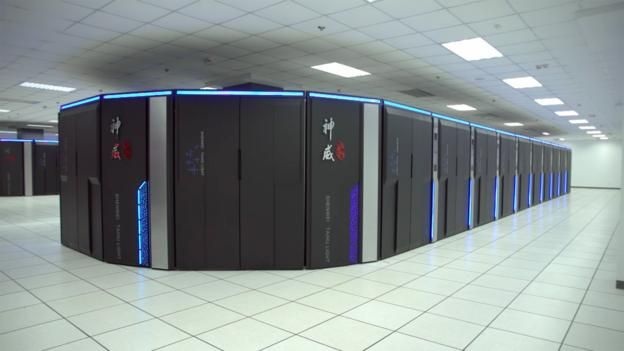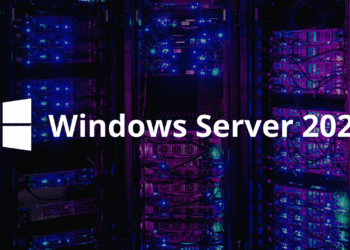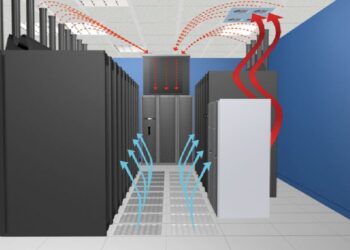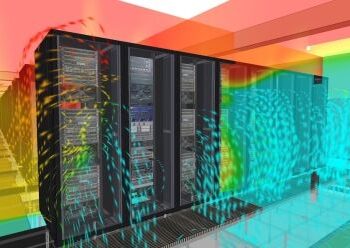In today’s digital era, the need for robust, adaptable server infrastructures has never been greater. As businesses evolve, customer expectations rise, and data flows at unprecedented speeds, companies must design and implement server systems that not only handle current workloads but also adapt seamlessly to future growth. Scalable servers have emerged as a cornerstone of modern IT infrastructure, ensuring that systems remain resilient, efficient, and cost-effective even when confronted with surges in demand. This article explores the evolution, principles, challenges, and future trends of scalable servers, offering a comprehensive guide for IT professionals, business leaders, and technology enthusiasts alike.
Introduction
The exponential increase in digital transactions, cloud services, and data-intensive applications has led to a paradigm shift in how organizations manage their IT infrastructures. Traditional, static server setups are rapidly being replaced by dynamic, scalable solutions that can adjust to fluctuating workloads. The transformation has been driven by several factors, including the rise of cloud computing, advancements in virtualization technology, and the growing necessity for real-time data processing. This article delves into the intricacies of scalable server architectures, providing insights into why scalability is essential and how it can be achieved effectively.
Scalable servers are not just about adding more hardware—they embody a holistic approach to system design that encompasses architecture, software, networking, and management. As we explore various aspects of scalable servers, we will consider historical developments, current technologies, practical implementation strategies, and future innovations that promise to redefine how we approach server scalability.
The Evolution of Server Scalability
The concept of scalability in computing has undergone significant transformation over the decades. Initially, server environments were built around monolithic systems with limited ability to adjust to changing workloads. As demand grew, these systems began to show cracks in their ability to efficiently process increasing amounts of data and user requests.
A Historical Perspective
- Early Server Architectures: In the early days of computing, servers were typically large, centralized mainframes. These systems were powerful but expensive and inflexible. They were designed to handle a fixed amount of processing power and storage, making them less adaptable to sudden increases in demand.
- Transition to Client-Server Models: The advent of client-server architectures in the 1980s and 1990s marked a significant shift. Organizations began to distribute processing tasks across multiple machines, which allowed for better resource allocation and more efficient handling of user requests.
- Rise of Distributed Computing: As the internet grew and business operations went global, the limitations of traditional architectures became apparent. The distributed computing model emerged, where workloads were spread across multiple interconnected servers, enabling systems to handle larger volumes of data and requests.
- Modern Cloud Infrastructures: Today, cloud computing platforms like Amazon Web Services, Microsoft Azure, and Google Cloud Platform epitomize the scalable server model. They offer on-demand resources that can be dynamically scaled up or down, ensuring that businesses only pay for what they use while maintaining the flexibility to respond to demand spikes.
This historical evolution underscores a clear trend: as technology has advanced, so too have the expectations for server performance and scalability. Modern systems must support not just steady-state operations but also dramatic surges in traffic and processing requirements.
Understanding Scalable Servers
At its core, scalability refers to the ability of a system to handle a growing amount of work or to accommodate an increase in resources. When applied to servers, scalability is about designing systems that can expand to support additional workloads without sacrificing performance or reliability.
A. Vertical Scaling vs. Horizontal Scaling
One of the fundamental decisions in server architecture is choosing between vertical and horizontal scaling:
A. Vertical Scaling (Scaling Up):
- This approach involves adding more power (CPU, RAM, storage) to an existing server.
- Vertical scaling is often simpler to implement because it does not require significant changes to the application architecture.
- However, it has its limitations as there is a physical ceiling to how much hardware can be added to a single machine.
B. Horizontal Scaling (Scaling Out):
- Horizontal scaling means adding more servers to the existing pool to distribute the load.
- This approach is inherently more flexible and resilient, as failure of one node does not bring down the entire system.
- It often involves more complexity in terms of load balancing and data consistency, but modern solutions have made horizontal scaling more accessible and efficient.
B. Key Components of Scalable Server Architecture
A scalable server architecture typically includes several critical components designed to work in harmony:
A. Load Balancers:
- These distribute incoming network traffic across multiple servers, ensuring that no single server becomes a bottleneck.
- Load balancing can be implemented using hardware appliances or software solutions.
B. Redundant Servers:
- Redundancy is vital for ensuring system availability. Multiple servers performing the same tasks can replace one another in case of failure.
C. Auto-Scaling Mechanisms:
- Auto-scaling tools monitor system performance and automatically adjust the number of active servers based on real-time demand.
- This dynamic scaling helps optimize resource usage and cost-efficiency.
D. Distributed Databases:
- Scalable architectures often rely on distributed databases that can partition data across multiple nodes.
- This not only improves performance but also ensures high availability and fault tolerance.
E. Caching Solutions:
- Caching frequently accessed data in memory reduces the load on databases and improves response times.
Understanding these components and how they interrelate is essential for designing a scalable server system that can meet the diverse and dynamic demands of modern applications.
Challenges in Meeting Growing Demands
While scalable servers offer a pathway to improved performance and flexibility, they also introduce several challenges that must be carefully managed.
A. Performance Bottlenecks
One of the primary concerns when scaling server infrastructures is the emergence of performance bottlenecks. These occur when one or more components of the system cannot handle the increased load, thereby limiting the overall performance.
- Resource Contention: When multiple processes vie for the same hardware resources, performance can degrade.
- Network Latency: Increased communication between distributed nodes can result in higher latency, affecting user experience.
- Data Synchronization: Ensuring consistency across distributed databases can lead to delays, particularly in write-heavy applications.
B. Cost Management
Scaling server infrastructure often involves additional costs. While cloud services offer pay-as-you-go models, unpredictable usage spikes can lead to budget overruns if not carefully monitored.
- Infrastructure Costs: The expense of acquiring and maintaining additional hardware or cloud instances.
- Operational Costs: Increased complexity requires more robust monitoring, maintenance, and troubleshooting, which can escalate staffing and operational expenses.
- Licensing Fees: Some software licenses are based on the number of instances or users, adding another layer of cost when scaling.
C. Security Considerations
Expanding the server network can create new attack surfaces for malicious actors. Ensuring security in a scalable environment requires:
- Enhanced Monitoring: Continuous surveillance for potential breaches or vulnerabilities.
- Regular Updates: Applying patches and updates across a distributed system can be more complex.
- Access Control: Implementing stringent access policies and authentication measures to prevent unauthorized access.
D. Integration Complexities
As organizations adopt hybrid or multi-cloud environments, integrating different systems and ensuring smooth communication between them becomes challenging.
- Compatibility Issues: Different systems may use varying protocols, which can hinder interoperability.
- Data Migration: Moving data between systems or scaling out data storage can introduce risks of data loss or corruption.
- Management Overhead: More systems require more sophisticated management and orchestration tools.
Addressing these challenges requires a proactive approach, leveraging modern tools and best practices to ensure that scalable server architectures remain robust, secure, and efficient.
Technologies Driving Scalable Servers
Modern server scalability is underpinned by several key technologies that have transformed how businesses manage IT infrastructure.
A. Cloud Computing
Cloud computing has revolutionized the way organizations approach scalability. By providing on-demand access to computing resources, cloud platforms enable businesses to quickly scale their infrastructure based on current needs.
- Elastic Compute Resources: Services like Amazon EC2, Google Compute Engine, and Microsoft Azure allow for rapid provisioning and de-provisioning of resources.
- Global Data Centers: Cloud providers maintain extensive networks of data centers, ensuring high availability and low latency for users around the world.
- Cost Efficiency: Pay-as-you-go pricing models help businesses manage costs by only paying for the resources they use.
B. Virtualization and Containerization
Virtualization technologies have long been a staple in scalable server architectures, allowing multiple virtual machines to run on a single physical host. More recently, containerization has emerged as a lightweight alternative.
A. Virtual Machines (VMs):
- VMs encapsulate an entire operating system, allowing multiple instances to run on a single physical server.
- They provide strong isolation but can be resource-intensive.
B. Containers:
- Containers share the host operating system, making them more efficient in terms of resource utilization.
- Technologies such as Docker and Kubernetes have popularized containerization, making it easier to deploy and manage microservices-based applications.
C. Microservices Architecture
Moving away from monolithic applications, microservices architecture breaks down applications into smaller, independent services that can be developed, deployed, and scaled independently.
- Service Decoupling: Each microservice can be scaled based on its unique requirements, improving overall system efficiency.
- Resilience: Failure in one service does not necessarily bring down the entire application, enhancing fault tolerance.
- Flexibility: Teams can develop, update, and deploy microservices using different technologies that best suit the service’s needs.

D. Serverless Computing
Serverless architectures abstract server management entirely, allowing developers to focus solely on writing code. The cloud provider automatically handles resource allocation, scaling, and maintenance.
- Event-Driven Models: Functions are executed in response to specific triggers, such as HTTP requests or database changes.
- Cost Savings: Billing is based on actual usage rather than provisioned capacity, making it an attractive option for variable workloads.
- Simplified Operations: With no need to manage underlying servers, development teams can reduce operational overhead and accelerate deployment cycles.
Each of these technologies plays a pivotal role in enabling scalable server environments that can adapt to growing and unpredictable demands while optimizing performance and cost-efficiency.
Strategies for Implementing Scalable Server Infrastructures
Designing a scalable server environment is not merely a matter of choosing the right technology; it also involves adopting best practices and strategies that align with business objectives and technical requirements.
A. Planning and Assessment
Before implementing a scalable architecture, organizations must conduct a thorough assessment of their current infrastructure, anticipated growth, and application requirements.
A. Capacity Planning:
- Determine current and projected workloads, including peak usage times and seasonal variations.
- Evaluate historical data to forecast future demand.
B. Risk Analysis:
- Identify potential points of failure and areas that may require redundancy.
- Develop contingency plans to mitigate risks associated with scaling.
C. Cost-Benefit Analysis:
- Assess the financial implications of scaling, including infrastructure, operational, and licensing costs.
- Compare different scaling approaches (vertical vs. horizontal) to determine the most cost-effective solution.
B. Architectural Design
The design phase is critical in building a system that can scale efficiently and reliably.
A. Modular Architecture:
- Design the system in independent modules or services that can be scaled individually.
- Use APIs and service-oriented architectures to facilitate communication between modules.
B. Load Balancing and Redundancy:
- Implement load balancers to distribute traffic evenly across servers.
- Ensure redundancy in critical components to prevent single points of failure.
C. Data Management:
- Utilize distributed databases and caching mechanisms to improve data access speeds.
- Ensure data consistency and integrity across multiple nodes.
D. Automation:
- Integrate auto-scaling solutions that monitor system performance and adjust resources in real-time.
- Deploy configuration management and orchestration tools to streamline system updates and maintenance.
C. Deployment and Monitoring
Once the system architecture is designed, the deployment phase focuses on implementation, testing, and continuous monitoring to ensure performance and reliability.
A. Staged Rollouts:
- Deploy changes incrementally to reduce the risk of system-wide issues.
- Use canary deployments to test new features on a small subset of users before a full rollout.
B. Continuous Integration/Continuous Deployment (CI/CD):
- Automate the deployment process to ensure rapid updates and consistent configurations.
- Integrate rigorous testing procedures to catch issues early.
C. Monitoring and Analytics:
- Implement comprehensive monitoring solutions that track server performance, network latency, and error rates.
- Use analytics tools to gain insights into usage patterns and system performance, enabling proactive scaling and optimization.
D. Disaster Recovery:
- Develop robust disaster recovery plans that include regular backups, failover strategies, and incident response protocols.
- Ensure that the system can recover quickly from failures or cyberattacks with minimal downtime.
Through careful planning, thoughtful design, and rigorous monitoring, organizations can build scalable server infrastructures that not only meet current demands but are also well-equipped to handle future growth and technological advancements.
Real-World Examples and Case Studies
Examining real-world examples provides valuable insights into how scalable server infrastructures are implemented and the benefits they offer. Here, we explore several case studies from industry leaders who have successfully navigated the challenges of scaling their server environments.
A. Global E-commerce Platforms
Large e-commerce companies face the continuous challenge of managing peak traffic during shopping events, flash sales, and seasonal promotions. These platforms have adopted scalable server architectures to ensure uninterrupted service and optimal performance.
A. Load Distribution:
- By using advanced load balancing and auto-scaling, these platforms can distribute millions of simultaneous transactions across a global network of servers.
- This approach minimizes latency and ensures a smooth shopping experience even during traffic surges.
B. Distributed Data Management:
- E-commerce platforms employ distributed databases and caching systems to handle high volumes of product queries and transaction data.
- This not only improves speed but also enhances the overall reliability of the platform.
B. Streaming Services
Streaming platforms, which deliver high-definition video and audio content to millions of users worldwide, rely heavily on scalable servers to manage the immense data flow.
A. Adaptive Bitrate Streaming:
- These services use scalable architectures to adjust video quality in real time based on network conditions and user demand.
- This technology ensures that users receive the best possible quality without buffering or delays.
B. Content Delivery Networks (CDNs):
- CDNs distribute content across geographically dispersed servers, reducing load times and improving accessibility.
- Scalable server architectures allow these networks to expand as more content and users are added.
C. Financial Services and High-Frequency Trading
In the financial sector, where milliseconds can determine profit and loss, scalable servers are critical for processing vast amounts of data in real time.
A. Real-Time Data Processing:
- Financial institutions use scalable server environments to analyze market data, execute trades, and manage risk in real time.
- These systems are designed for minimal latency and high reliability, ensuring that transactions are processed almost instantaneously.
B. Robust Security Measures:
- Given the sensitive nature of financial data, these infrastructures incorporate advanced security protocols and redundant systems to safeguard against cyber threats and operational failures.
Each of these case studies demonstrates how scalable servers are not a luxury but a necessity in environments where demand can fluctuate dramatically and reliability is paramount.
Future Trends in Scalable Server Architectures
As technology continues to evolve, so do the methods and technologies used to build scalable server infrastructures. Several emerging trends promise to further revolutionize this landscape.
A. Edge Computing
Edge computing shifts data processing closer to the source of data generation, reducing latency and easing the burden on centralized data centers. As more devices connect to the internet through the Internet of Things (IoT), the need for edge computing becomes increasingly significant.
-
Localized Processing:
- Data is processed on or near the device generating it, leading to faster response times.
- This approach is particularly beneficial for real-time applications such as autonomous vehicles and smart cities.
-
Scalability at the Edge:
- Combining edge computing with traditional scalable server architectures creates a hybrid model that can efficiently handle both localized and global demands.
B. Artificial Intelligence and Machine Learning Integration
Artificial intelligence (AI) and machine learning (ML) are being integrated into scalable server systems to automate performance tuning, predict traffic spikes, and optimize resource allocation.
A. Predictive Analytics:
- AI-powered monitoring tools can analyze historical data to forecast demand and trigger auto-scaling preemptively.
- This minimizes the risk of overload during unexpected surges in traffic.
B. Self-Optimizing Systems:
- Machine learning algorithms continuously assess system performance and make real-time adjustments, ensuring optimal resource utilization.
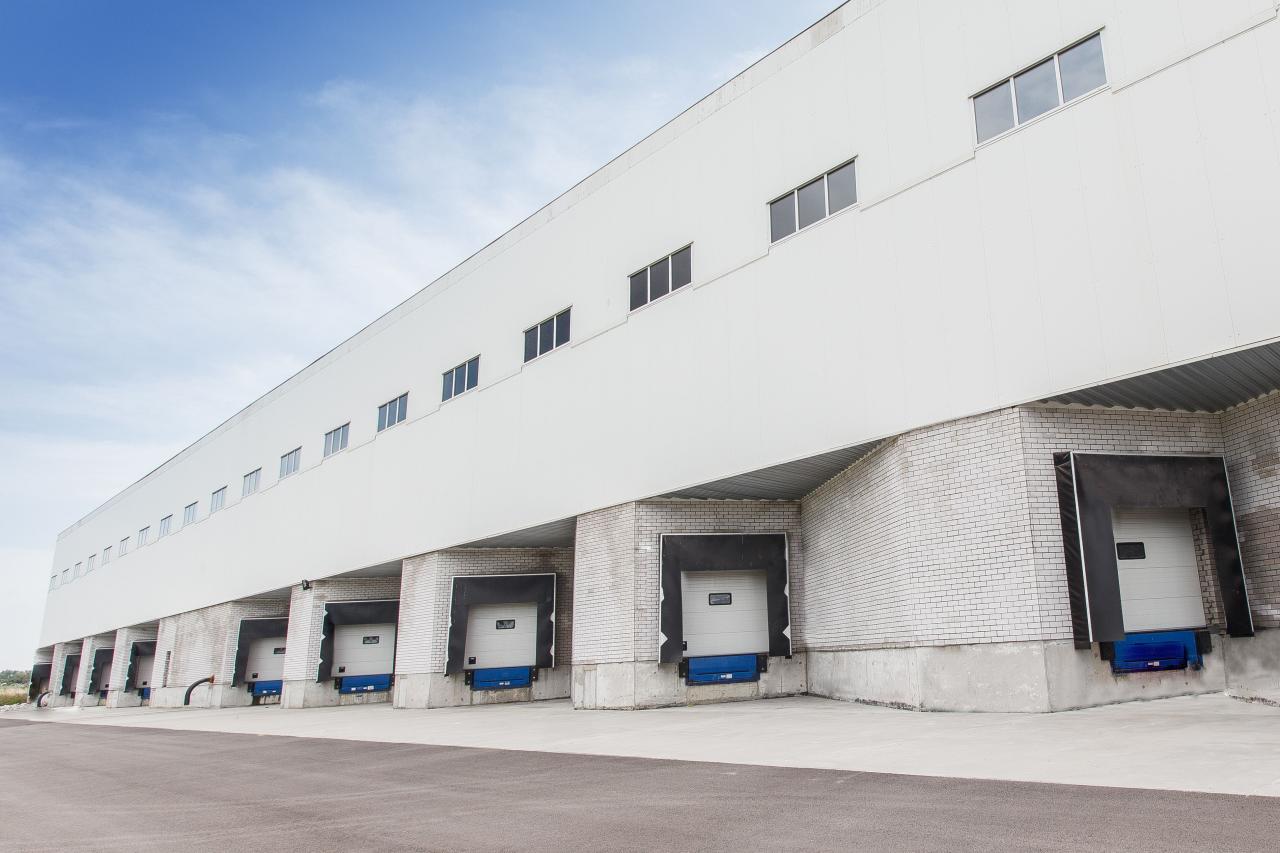
C. Quantum Computing
While still in its nascent stages, quantum computing holds the potential to revolutionize server scalability by solving complex problems at unprecedented speeds.
- High-Performance Processing:
- Quantum computers can process vast amounts of data simultaneously, potentially transforming how large-scale computations are performed.
- This technology, when integrated with scalable infrastructures, could pave the way for breakthroughs in fields such as cryptography, drug discovery, and climate modeling.
D. Green Computing Initiatives
With the growing emphasis on sustainability, future scalable server architectures will likely incorporate eco-friendly practices aimed at reducing energy consumption and minimizing the carbon footprint.
-
Energy-Efficient Hardware:
- Innovations in hardware design are leading to servers that consume less power while delivering higher performance.
- Data centers are increasingly utilizing renewable energy sources to power their operations.
-
Sustainable Data Management:
- Software solutions are being developed to optimize data center cooling and resource allocation, further reducing environmental impact.
As these trends continue to evolve, scalable server architectures will become even more resilient, intelligent, and sustainable, driving the next wave of technological innovation.
Conclusion
The journey toward building scalable server infrastructures is both challenging and rewarding. As organizations confront the realities of growing digital demands, scalable servers offer a robust solution that not only meets current needs but also paves the way for future advancements. From historical developments to modern cloud-based architectures, the evolution of server scalability has been marked by continuous innovation and adaptation.
Key takeaways include:
A. Understanding the fundamentals:
- Recognize the difference between vertical and horizontal scaling and the importance of load balancing, redundancy, and auto-scaling.
B. Embracing modern technologies:
- Leverage cloud computing, virtualization, containerization, and microservices to build flexible, efficient, and cost-effective server infrastructures.
C. Addressing challenges head-on:
- Tackle performance bottlenecks, cost management, security, and integration complexities through careful planning, design, and continuous monitoring.
D. Staying ahead of the curve:
- Keep an eye on emerging trends such as edge computing, AI integration, quantum computing, and sustainable practices to future-proof your infrastructure.
In a world where digital transformation is accelerating at an unprecedented pace, scalable servers represent the backbone of reliable, high-performing, and adaptable IT systems. Organizations that invest in scalable infrastructure today are better positioned to handle the uncertainties of tomorrow, ensuring continuous growth, improved customer satisfaction, and long-term success.
By adopting best practices, leveraging cutting-edge technologies, and preparing for future trends, businesses can create server environments that not only meet the demands of today but also have the agility to evolve with the technological landscape of tomorrow.

